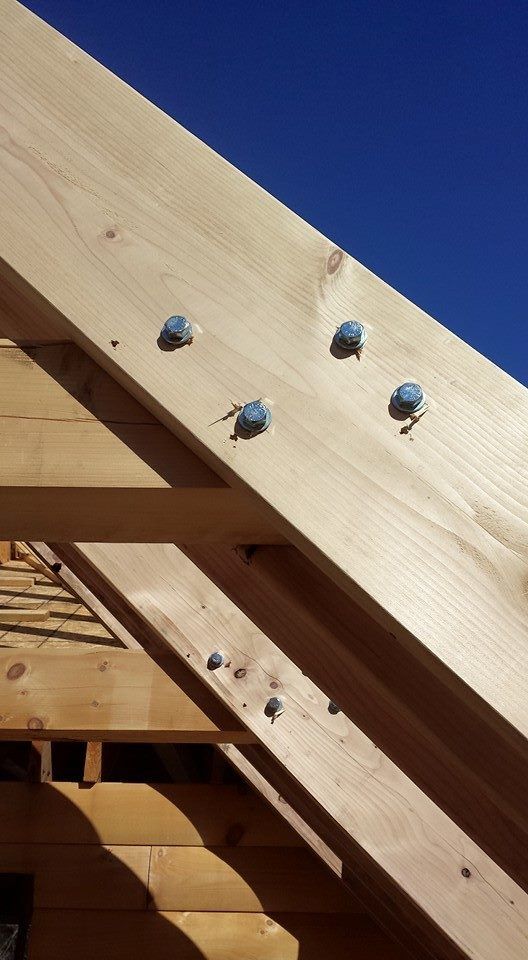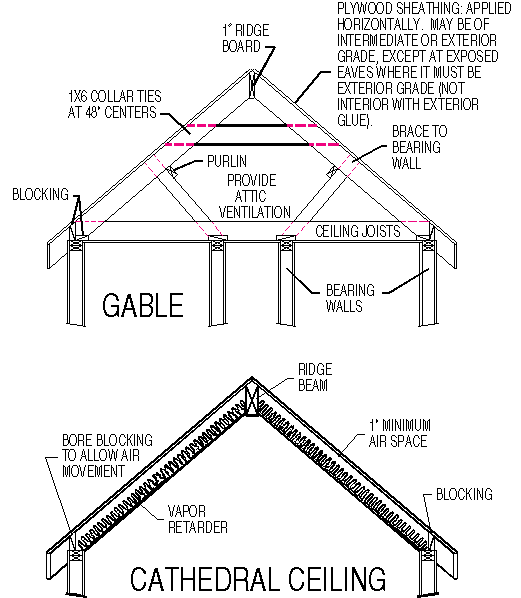Roof Collar Tie Placement

For example if the height of the ridge.
Roof collar tie placement. Collar tie is a colloquial term for collar beam. Roof classification of different types of roofs. By upper third here we mean one third of the length of the rafter from ridge to top plate. Nail one end of the tie into the rafter with 3 inch nails.
A collar tie is a tension tie in the upper third of opposing gable rafters that is intended to resist rafter separation from the ridge beam during periods of unbalanced loads such as that caused by wind uplift or unbalanced roof loads from snow. The upper collar tie does not experience the tension that the lower rafter tie is resisting if that tension is resisted in the upper third the roof is probably on the ground. Laying out a common rafter for simple gable or shed roofs you need to learn this basic building block of roof framing. More about building and repairing roofs.
Measure the vertical distance from the top of a ceiling joist to the ridge of the roof and divide the result by 3 to determine the height of the collar ties. Secure the opposite side in the same manner. In collar tie roof the horizontal tie is raised up from the feet of the rafters to the almost middle of the rafters. This raised up horizontal tie is known as the collar tie.
Installed in the top third of the roof structure collar ties prevent separation of the roof at the ridge due to wind uplift. A collar tie is a horizontal roof rafter compression connector that is located in the uppermost third of the span of a pair of opposed sloped or gable roof rafters. Collar ties should not be fixed more than one third or one half of the rise of the roof up from the wall plate. The rafter ties are incorrectly labelled as collar ties.
The prescriptive provisions of the building code require rafter ties on each rafter pair and collar ties every 4. Collar tie a tension tie in the upper third of opposing gable rafters that is intended to resist rafter separation from the ridge because of wind or unbalanced roof loads.













































